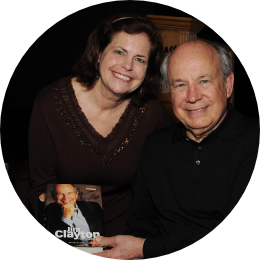Facts vs Fiction About Tornadoes and Manufactured Homes
I'm cursing our local weatherman who said it was a quiet tornado season -just after that all heck broke loose and we had the devastating storms in Texas and Oklahoma. My sister and my favorite Jr Lifestylists live in Edmond - just North of Oklahoma City so after the Moore tornadoes I went to visit and see for myself what Mother Nature had sent to her city.
My parents had worked with the Salvation Army for many years doing disaster relief so I'd seen what a hurricane could do to a home and a town, but this was the first time I had seen tornado damage in person. As I was driving up I-35 into Moore things didn't look as bad as I expected until I came to the shopping center and hospital, and I think within about 5 feet you could see what was hit and what wasn't. The theater next to the hospital was fine, but the hospital and everything directly in front of and in back of it looked like it had been in a blender. Cars were crushed, windows blown out.. I can't imagine what the people who were in that hospital at the time went through.
Behind the hospital was a subdivision that was now just a pile of rubble. They always tell you to go to the room the furthest inside your home or the bathroom - one home only had the bathroom left standing, another had a solitary fireplace chimney standing alone.
I also went out to where the third storm hit that killed 22 people out near the Oklahoma City airport and fairgrounds. Everyone talks about how mobile homes, trailers, or factory built homes are the worst place to be, and since Yes! Communities has 13 land lease communities in the Oklahoma City area I wanted to see for myself how the homes in these communities stood up as opposed to commercial buildings and site built homes in the area. It was amazing. When I talked to some of the Yes team that had come in from 3 states to help out in their communities I learned that not 1 home in their community was destroyed, and there were no major injuries to any of their residents. What else really stood out to me is that every Yes! Community has a storm shelter for their residents. If you lived in a site built community you were own your own -either you had your own storm shelter constructed or you had to go find shelter elsewhere. I was also so impressed with how Yes! took care of their residents - they were truly working 24 hrs a day to find them food, water, and to help with cleanup. They didn't wait for state or federal assistance - they immediately got to work and took care of their residents.
Here's some facts and fiction about storm damage and factory built housing, we also have more images and information on our Lifestylist® website.
Fact: in an F5 tornado when winds can reach 200 mph or more most buildings will sustain considerable damage.
Fact: The best place to be when a tornado hits is in a storm shelter, preferably underground if possible.Fiction: Since a factory built home is delivered on wheels it remains mobile and can be easily moved. Fact: Even though a factory built home arrives on wheels, in most cases the home is attached to a slab or piers and "tied down" to the lots using a complex system that makes it immobile. Tires are removed, the home is connected to plumbing and electrical and in theory even though the home can be moved there is a considerable cost involved. Land lease communities are very strict about how a home is sited and tied down in their communities to maintain safety.
Fact: Today's factory built homes are built to government standards and specifications. "HUD Code" homes are factory built homes that are constructed to national HUD code standards and inspected by nationally certified HUD code inspectors. By doing this no matter where the home will be located, it will meet national standards for a well built home. Many times these standards exceed what is expected of a traditional, site built home. Any factory built home after 1976 is built to these specifications.
Fiction: Because a factory built home is brought in on wheels, it's easier for it to be blown off the slab or pad in a storm. Fact: a HUD constructed home is built on a steel frame and the home is then constructed around the frame. This frame becomes part of the home and stays with the home and is part of what is then attached to the site or slab. Unlike site built homes where the wooden frame of the home is connected to the slab or foundation then the home is built around it, the steel acts as a backbone that keeps the entire home together and allows for shifting. Plus remember that a factory built home is designed to travel down the road at at least 50 mph. I think many site built homes would have a lot of structural damage if they had to do the same.
Million Dollar Mobile Homes
If you think mobile homes sit on blocks and that a mobile home park is undesirable, you haven't seen this beautiful home. The exterior is deceiving - what looks ordinary from the street is extraordinary when you walk and side and see all of the spectacular views and renovations that have been made to the home.
For more thoughts on the value of factory built housing and why it's so important to choose the right person to market your home visit our Lifestylist site. For more photos and information on purchasing the home visit celebrity Realtor Madison Hildebrand's site - The Malibu Life. The photo above is compliments of Mr. Hildebrand.
Subscribe to:
Posts (Atom)










